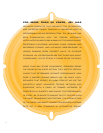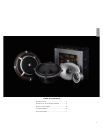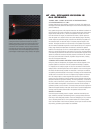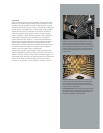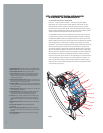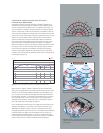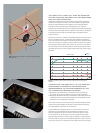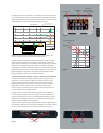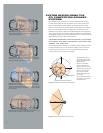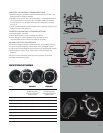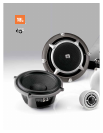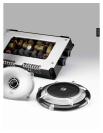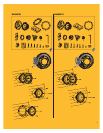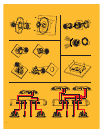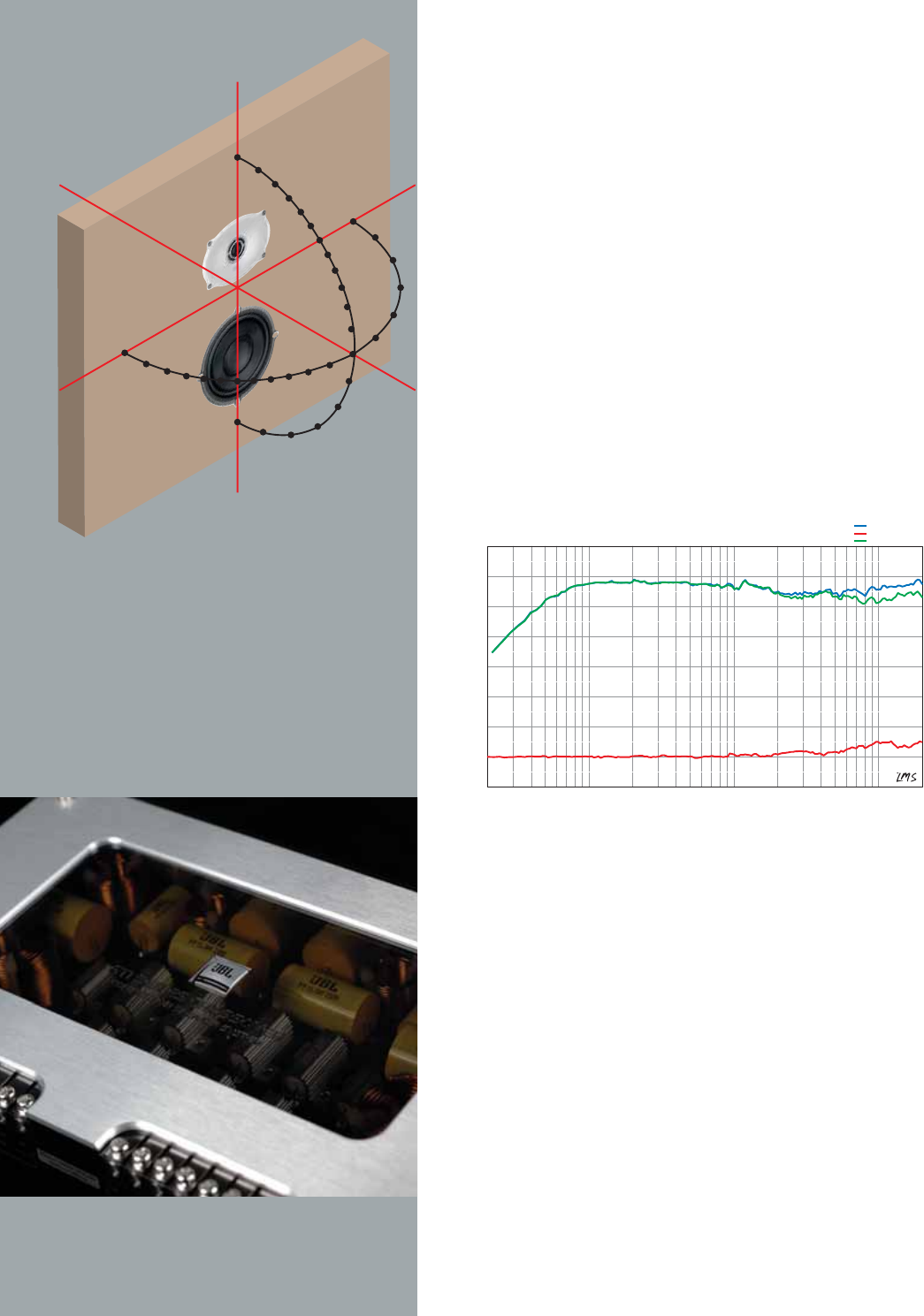
THE DIRECTIVITY INDEX (DI): HOW WE MEASURE
THE RELATIONSHIP BETWEEN ON-AXIS RESPONSE
AND OFF-AXIS RESPONSE
The Directivity Index (DI) is the ratio of the intensity of the sound in the listening
window to the average of the intensity of the sound radiated at all angles (sound
power). We make measurements of the speakers in two semicircular patterns
along the horizontal and vertical axes of the speaker (Figure 7). With those
measurements, we determine the size of the optimal listening window and calculate
the sound power of the speaker. We then compare the sound power to the response
in the listening window and plot the directivity index for the speaker system’s
frequency response.
The blue curve at the top in Figure 8 is the Window Response and the curve at the
bottom is the Directivity Index. The Directivity graph indicates the difference in
level of the response in the window and off-axis (sound power, represented by the
green line in the graph). Low-directivity values indicate that the sound is radiated
at all angles and higher directivity values indicate that the sound is more focused
into the listening window. The practical ideal is constant directivity (a flat line) in
the woofer region and a smooth and gradual upward slope in the crossover region
and above.
CONTROLLING THE DIRECTIVITY OF THE TWEETER:
WAVEGUIDES CONTRIBUTE TWO SIGNIFICANT
IMPROVEMENTS TO THE PERFORMANCE OF THE
GTi COMPETITION SPEAKER SYSTEMS
• Waveguides match the directivity of the tweeter to that of the woofer at
the crossover by focusing the tweeter’s output into the listening window.
• Waveguides decrease the directivity of the tweeter at high frequencies through
controlled diffraction along the gentle transition from the waveguide’s conical
center section to the waveguide’s outside edge.
Both of these contributions ensure that the off-axis response reflected by nearby
surfaces more closely resembles the response in the optimal listening window.
That makes speakers sound better in any environment.
In understanding how a waveguide works, it’s useful to think of its shape as a
passageway for sound between the listening window and radiation into full
space; the waveguide can focus the sound into the listening window or allow
it to be spread out over all the angles. At the lowest frequencies the tweeter
plays, the tweeter operates in its piston range and radiates in a spherical pattern.
The conical section in the center of the waveguide (indicated in green in Figure 9)
directs some of the off-axis output back into the listening window. That increases
8
Figure 7. Measurements are made at 10° intervals along the horizontal
and vertical axes.
Figure 8. The directivity index is equal to the window response minus the sound power
response.
Window
Directivity Index
Sound Power
20 Hz 50 100 200 500 1K 2K 5K 10K 20K
dBSPL
-10
0
10
20
90
100
80
70
Directivity Index




